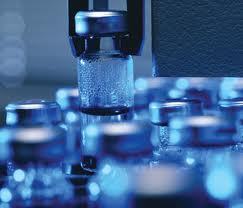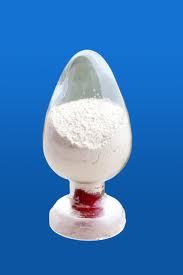Fluconazole Powder
5000 INR/Kilograms
Product Details:
- Ph Level 4.0 to 8.0
- Taste Other
- Structural Formula C13H12F2N6O
- Smell Other
- Storage Room Temperature
- Loss on Drying Not More than 0.5%
- Melting Point 138-140 C
- Click to View more
X
Fluconazole Powder Price And Quantity
- 50 Kilograms
- 5000 INR/Kilograms
- 5000.00 - 7000.00 INR/Kilograms
Fluconazole Powder Product Specifications
- 86386-73-4
- Fluconazole
- Not More than 0.5%
- C13H12F2N6O
- Other
- 306.271 Grams (g)
- Room Temperature
- Other
- C13H12F2N6O
- 100%
- Powder
- Medicine Grade
- 4.0 to 8.0
- Flucostat;Fluconazolum [Latin];Biozolene;FLU;Zemyc;Forcan;FCZ;Diflucan;Flusol;Flukezol;Pritenzol;2-(2,4-difluorophenyl)-1,3-bis(1,2,4-triazol-1-yl)propan-2-ol;Biocanol;Fluzone;Cryptal;UK 49858;Syscan;Alflucoz;1H-1,2,4-Triazole-1-ethanol,R-(2,4-difluorophenyl)- R-(1H-1,2,4-triazol-1-ylmethyl)-;FLZ;Diflucan (TN);Flucazol;FLC;Canzol;Oxifugol;Fluconazole (JAN/USAN);Fungata;Mutum;FLCZ;Baten;alpha-(2,4-Difluorophenyl)-alpha-(1H-1,2,4-triazol-1-ylmethyl)-1H-1,2,4-triazole-1-ethanol;Fluconazol [Spanish];Triflucan;Afungil;Zonal;Elazor;
- white or off white crystalline powder
- Fluconazole, commonly known as Diflucan, is an antifungal drug used for the treatment of both systemic and superficial fungal infections in a variety of tissues
- 579.8 C at 760 mmHg
- Other
- 138-140 C
- Freely soluble in methanol; soluble in alcohol and in acetone; sparingly soluble in isopropanol and in chloroform; slightly soluble in water; very slightly soluble in toluene.
- 2942
Fluconazole Powder Trade Information
- Letter of Credit (L/C), Letter of Credit at Sight (Sight L/C), Cash Advance (CA), Cash in Advance (CID)
- 1000 Kilograms Per Day
- 1 Week
- Free samples are available
- DRUM
- Australia, North America, South America, Eastern Europe, Western Europe, Middle East, Central America, Asia, Africa
- ISO, GMP
Product Description
Our strength lies in our proficient team of dexterous workforce, helps us in offering our clients Fluconazole. It is the sodium salt of citric acid. This compound is white, crystalline powder or white, granular crystals, slightly deliquescent in moist air, freely soluble in water, practically insoluble in alcohol. Like citric acid, it has a sour taste. From the medical point of view, Fluconazole is used as alkalinizing agent. It works by neutralizing excess acid in the blood and urine. It is used for the treatment of metabolic acidosis.
Fluconazole Properties
- Formula: C13H12F2N6O
- Molecular Weight: 306.27
- Deleted CAS: 123631-92-5
- Synonyms: Flucostat;Fluconazolum Latin];Biozolene;FLU;Zemyc;Forcan;FCZ;Diflucan;Flusol;Flukezol;Pritenzol; Alflucoz;FLZ;Diflucan (TN);Flucazol;FLC;Canzol;Oxifugol;Fluconazole (JAN/USAN);Fungata;Mutum;FLCZ;Baten;Fluconazol [Spanish];Triflucan;Afungil;Zonal;Elazor;
- Density: 1.49 g/cm3
- Melting Point: 138-140 C
- Boiling Point: 579.8 C at 760 mmHg
- Flash Point: 304.4 C
- Solubility: DMSO: 5 mg/mL
- Appearance: White or off white crystalline powder
- How does it work
Fluconazole works against infections caused by fungi (or yeast). As a result of the hole made in the cell membrane, the medicine kills the fungus. Taking this medicine will allow your symptoms to improve as well as treat the infection.
- Applications. Or where it is used
Fluconazole is effective in the treatment of serious fungal or yeast infections, like vaginal candidiasis, esophageal candidiasis, oropharyngeal candidiasis, other candida infections and peritonitis.
- How to use
Your doctor may prescribe this medicine with or without food, usually once a day. The suspension form of this medication should be shaken well before every dose. Measurers often use measuring spoons or devices to accurately measure doses.
- Dosage of usage
Dosage Considerations Should be Given as Follows:
Oropharyngeal Candidiasis
Adult: 200 mg orally on Day 1, then 100 mg once/day
Pediatric: 6 mg/kg orally on Day 1, then 3 mg/kg once/day; not to exceed 600 mg/day
Dosing considerations
A course of treatment should last at least two weeks in order to prevent relapse
Esophageal Candidiasis
Adult: 200 mg orally on Day 1, THEN 100 mg once/day; doses up to 400 mg/day may be used on the basis of patient's response
Pediatric: 6 mg/kg orally on Day 1, THEN 3 mg/kg once/day
Doses up to 12 mg/kg/day may be used, on the basis of response of patient
Dosing considerations
Treat for a minimum of 3 weeks and for at least 2 weeks following symptoms resolution
- Side effects
Some of the side effects are as follows
- Chills
- Persistent stomach pain
- Upper right abdominal or stomach pain
- Yellow eyes and skin
- General feeling of tiredness or weakness
- Hives, itching, or skin rash
- Large, hive-like swelling on the face, eyelids, lips, tongue, throat, hands, legs, feet, or genitals
- Light-colored stools
- Warnings and precautions while using this product
Consult your doctor if you experience darkening of the skin, skin rash, diarrhea, loss of appetite, mental depression, dizziness, fainting, nausea, or unusual tiredness or weakness. The medicine may cause some people to feel dizzy, drowsy, or less alert than usual.
Tell us about your requirement

Price:
Quantity
Select Unit
- 50
- 100
- 200
- 250
- 500
- 1000+
Additional detail
Mobile number
Email







 : nilesh.sheth70
: nilesh.sheth70
